link to page 2 link to page 2 link to page 3 link to page 4 link to page 5 link to page 6 link to page 6 link to page 7 link to page 7 link to page 8 link to page 8 link to page 9 link to page 10 link to page 11 link to page 11 link to page 12 link to page 12 link to page 12 link to page 13 link to page 14 link to page 15 link to page 16 link to page 16 link to page 16 link to page 16 link to page 17

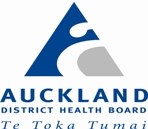
If printed, this document is only valid for the day of printing.
Body Parts & Tissue - Storage, Cremation and Return
Document Type
Policy
Function
Clinical Practice
Directorate(s)
All Directorates
Department(s) affected
All clinical departments
Applicable for which patients, clients or
All patients
residents?
Applicable for which staff members?
All clinicians
Key words (not part of title)
n/a
Author – role only
Quality Manager, LabPLUS
Owner (see
ownership structure)
Chief Medical Officer
Edited by
Document Controller
Date first published
December 2002
Date this version published
February 2017 - updated
Review frequency
3 yearly
Unique Identifier
PP01/PCR/054 – v06.00
Contents
1. Purpose of policy
2. Policy statements
3. Body parts and tissue for return directly post procedure
4. Body parts and tissue for laboratory testing and return to patient
5. Body parts and tissue for laboratory testing and cremation
6. Body parts and tissue for return to patient without laboratory testing (only if body part and /
or tissue cannot be taken home immediately)
7. National Women’s under 20 weeks baby / pregnancy tissue
8. Body parts and tissue for cremation only
9. Body parts and tissue in acute / emergency cases
10. Tissue storage within operating rooms and Blood Bank
11. Documentation process for storing tissue for elective procedures
12. Documentation process for storing tissue in procedures when consent is not gained (acutes)
13. Skull bone flap management and storage
14. Liver vascular vessel management and storage
15. Skin management and storage
16. Return or disposal of tissue or skull flap stored in Blood Bank or Operating Rooms no longer
required for replantation
17. Return of donated organs
18. Procedure
19. Nurse responsible for patient care / Duty manager (all clinical areas)
20. Body parts yellow sticker
21. Legislation
22. Associated Auckland DHB documents
23. Disclaimer
24. Corrections and amendments
Body-Parts-and-Tissue-Storage-Cremation-and-Return_2017-02-03.docx
Page 1 of 17


If printed, this document is only valid for the day of printing.
1. Purpose of policy
The purpose of this policy is to ensure that the organisation’s expectations are met regarding the legal and
cultural obligations pertaining to the storage, return to patient and cremation of body parts and human
tissue within Auckland DHB.
Exceptions
The policy covers all body parts and human tissue apart from the following:
Over 20 weeks stillbirths/neonatal deaths (refer to deceased policy in Associated Auckland DHB
documents section).
Tissue/organs for transplantation
Coroner’s cases
Consent procedures for body parts and tissue received from private specialists and GPs in the Auckland
region. Responsibility rests with the requestor.
Teeth extractions, hair and nail clippings (Body Parts Form CR2547 not required)
Tissue fixed in blocks, tissue on microscope slides, and other minute pieces of tissue post processing
held at Auckland DHB laboratories for future diagnostic use (for which informed consent must be
obtained)
Implanted medical devices
2. Policy statements
Health and safety regarding infectious material
Infectious material should not be returned if there is any risk to public safety. Safe handling of tissue / body
parts that has been stored in formalin is covered in the information sheet “Information for handling of
returned Body parts and tissue.”
Tikanga / cultural respect
At all times body parts / tissue must be handled and stored with appropriate respect according to Tikanga
best practice policy
Handling containers
All containers must be suitable, leak proof and fit for the purpose of use in regards to body parts / tissue.
Consent
A patient (or their representative and / or parent / guardian) must receive sufficient information regarding
body parts and tissue management to give informed consent.
The patient / family / whānau should be provided with the appropriate information leaflet prior to giving
informed consent and this is to be documented in the clinical record.
The information to the patient / family / whānau regarding management of body parts and tissue must
include an explanation on testing, storage, return or disposal by cremation and must be relevant to the
patient’s clinical management. It is the responsibility of the team carrying out the procedure to gain this
consent and to ensure that the patient / family / whānau understands the information regarding the
management of body parts and tissue.
Cremation
All tissue not for return to a patient is sent for collective cremation. Any ashes that are produced are
scattered in a designated area in the grounds of the Mangere Crematorium.
Collection
Tissue that is unable to be returned directly post procedure must be collected from LabPlus at a pre-
arranged time, upon presentation of photographic identification. (A delegate may collect on the patient’s
Body-Parts-and-Tissue-Storage-Cremation-and-Return_2017-02-03.docx
Page 2 of 17

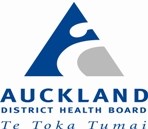
If printed, this document is only valid for the day of printing.
behalf as requested by the patient and on presentation of photographic identification). In exceptional
circumstances, LabPlus staff members may agree to an alternative arrangement.
After hours collection
For any urgent collections after hours, the Duty Manager should be contacted to assist with this process.
Refer to Duty Manager flow charts at the end of this document.
3. Body parts and tissue for return directly post procedure
Step
Action
1.
Prior to the procedure, the return of body parts / tissue must be discussed with
the patient / family / whānau. An information leaflet should be provided at this
time.
2.
Patient / family / whānau to indicate on the Agreement to Treatment form if the
body part or tissue is to be returned immediately. The consenting doctor must
complete the Body Parts / Tissue release form (CR2547) according to information
on Agreement to Treatment form.
3.
Upon removal of body part or tissue, it must be placed in an appropriate
container with a patient identification label.
4.
From the triplicate Body Parts / Tissue release form:
One sheet to accompany the body parts / tissue
One sheet to be placed in patient’s clinical record
One sheet to be handed to patient / family / whānau
5.
Container and Body Part / Tissue release form to be handed over to patient.
6.
Patient signs the form to confirm receipt of the tissue / body part.
Back to Contents
Body-Parts-and-Tissue-Storage-Cremation-and-Return_2017-02-03.docx
Page 3 of 17

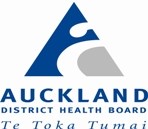
If printed, this document is only valid for the day of printing.
4. Body parts and tissue for laboratory testing and return to patient
Step
Action
1.
Prior to the procedure, the return of body parts / tissue must be discussed with the
patient / family / whānau. An information leaflet should be provided at this time.
2.
Patient / family / whānau to indicate on the Agreement to Treatment form if the
body part or tissue is to be returned. The consenting doctor must complete the Body
Parts / Tissue release form (CR2547) according to information on Agreement to
Treatment form.
3.
Upon removal of body part or tissue, it must be placed in an appropriate container
with a patient identification label.
4.
From the triplicate Body Parts / Tissue release form
One sheet to accompany the body parts / tissue
One sheet to be placed in patient’s clinical record
One sheet to be handed to patient / family / whānau
5.
For any patient that is to have body parts or tissue returned, there must be a “Body
part to be returned to patient” sticker affixed to the following:
the front-sheet in clinical record
the laboratory request form
Body Parts / Tissue release form accompanying specimen
specimen container
a record in the operating room register
Note: Limbs to be transported by HCA to LabPlus Level 3 Specimen Reception.
6.
The specimen and form to be sent to LabPlus Specimen Reception Level 3 LabPlus
building Grafton.
7.
Hand over to ward clinician regarding body parts / tissue sent to LabPlus.
8.
After testing, LabPlus Tissue Management oversee return.
Back to Contents
Body-Parts-and-Tissue-Storage-Cremation-and-Return_2017-02-03.docx
Page 4 of 17

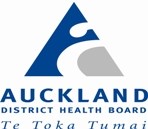
If printed, this document is only valid for the day of printing.
5. Body parts and tissue for laboratory testing and cremation
Step
Action
1.
Prior to the procedure, the return of body parts / tissue must be discussed with the
patient / family / whānau. An information leaflet should be provided at this time.
2.
Patient / family / whānau to indicate on the Agreement to Treatment form if tissue
not to be returned.
If for disposal after laboratory testing, the body parts form
(CR2547) does not need to be completed.
3.
Upon removal of body part or tissue, it must be placed in an appropriate container
with a patient identification label.
4.
The specimen and form to be sent to LabPlus Specimen Reception Level 3 LabPlus
building Grafton.
5.
After testing, LabPlus Tissue Management oversee cremation.
Back to Contents
Body-Parts-and-Tissue-Storage-Cremation-and-Return_2017-02-03.docx
Page 5 of 17


If printed, this document is only valid for the day of printing.
6. Body parts and tissue for return to patient without laboratory testing (only if
body part and / or tissue cannot be taken home immediately)
Step
Action
1.
Prior to the procedure, the return of body parts / tissue must be discussed with the
patient / family / whānau. An information leaflet should be provided at this time.
2.
Patient / family / whānau to indicate on the Agreement to Treatment form if tissue to
be returned. Consenting doctor to complete the Body Parts / Tissue release form
(CR2547) according to information on Agreement to Treatment form.
3.
Upon removal of body part or tissue, it must be placed in an appropriate container
fresh, not in formalin, with a patient identification label.
4.
From the triplicate of the Body Parts / Tissue release form
One sheet to accompany the body parts / tissue
One sheet to be placed in patient’s clinical record
One sheet to be handed to patient / family / whānau
5.
For any patient that is to have body parts or tissue returned, there must be a “Body
parts to be returned” sticker affixed to the following:
‘the front-sheet in clinical record
Body Parts / Tissue release form accompanying specimen
specimen container
a record in the operating room register
6.
Specimen and Body Part / Tissue release form to be sent to LabPlus Specimen
Reception (level 3) LabPlus building Grafton.
Limbs to be transported by HCA to Freezer in Level 1 LabPlus unless being tested
in which case they will be transported by HCA to Level 3 Lab Plus reception.
From Epsom Day Unit - Tissues to be transported to LabPlus via GLCC Phlebotomy
7.
Hand over to ward clinician regarding body parts / tissue sent to LabPlus.
8.
LabPlus Tissue Management oversee return.
9.
On discharge or if an inpatient death occurs, ward staff must contact LabPlus Tissue
Management to facilitate release of tissue to patient / family. For any urgent
collections after-hours the Duty Manager should be contacted to assist with this
process. A yellow Body Parts sticker is on the front sheet of the patient’s clinical
record and / or a Body Parts / Tissue form in the clinical record for reference.
Back to Contents
Body-Parts-and-Tissue-Storage-Cremation-and-Return_2017-02-03.docx
Page 6 of 17

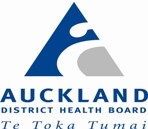
If printed, this document is only valid for the day of printing.
7. National Women’s under 20 weeks baby / pregnancy tissue
Step
Action
1.
Prior to the procedure, the return or disposal of fetus (baby) / placenta must be
discussed with the patient / family / whānau. An information leaflet should be provided
at this time.
2.
Complete the Body Parts / Tissue release form (CR 2547) (triplicate) according to the
agreement with the patient / family / whānau or as indicated on Agreement to
Treatment form, if required.
3.
If a Post mortem is requested forward to Forensic Pathology with the placenta.
After the post mortem, the fetus (baby) / placental tissue is returned to the ward for
the family to collect.
Forensic Pathology oversee cremation
4.
If tissue post mortem is not requested but examination of placenta / POC is required,
forward to Histology.
LabPlus Tissue Management oversee return or cremation
5.
From the triplicate of the Body Parts / Tissue release form
One sheet to accompany the baby / pregnancy tissue
One sheet to be placed in patient’s clinical record
One sheet to be handed to patient / family / whānau
8. Body parts and tissue for cremation only
Step
Action
1.
Prior to the procedure, the return or disposal of fetus (baby) / placenta must be
discussed with the patient / family / whānau. An information leaflet should be provided
at this time.
2.
Patient / family / whānau to indicate on Agreement to Treatment form if tissue for
cremation.
3.
Operating room staff member to complete the Body Parts / Tissue release form
(CR2547) (triplicate) according to the indication on the Agreement to Treatment form
and / or pre-op checklist.
4.
Upon removal of body part or tissue, it must be placed in an appropriate container with
a patient identification label
5.
From the triplicate Body Parts / Tissue release form
One sheet to accompany the body parts / tissue
One sheet to be placed in patient’s clinical record
One sheet to be handed to patient / family / whānau
6.
Tissue is collected from the relevant unit / department by LabPlus staff member or sent
via the Lamson system. Limbs to be transported by HCA to Freezer in Level 1 LabPlus.
7.
LabPlus Tissue Management oversee cremation.
Back to Contents
Body-Parts-and-Tissue-Storage-Cremation-and-Return_2017-02-03.docx
Page 7 of 17

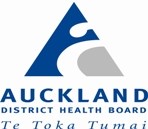
If printed, this document is only valid for the day of printing.
9. Body parts and tissue in acute / emergency cases
Step
Action
1.
In the case of acute or emergency surgery where no Body part / tissue Release form
(CR2547) or Agreement to Treatment form (CR0111) has been filled out, or where the
form “Authority to treat without consent (CR 0114) has been completed, then any body
part / tissue removed is to be treated as if the patient has requested it to be returned.
The OR nurse must complete a Body part / tissue release form (CR2547). The procedure
is then followed as if the patient had requested that body part / tissue to be returned.
2.
The ward clinician must discuss with the patient his / her wishes regarding the return
and / or retention of body part / tissue.
3.
The ward clinician must inform LabPlus Tissue Management of the outcome of patient’s
wishes.
10. Tissue storage within operating rooms and Blood Bank
At times it is required that tissue is stored within the operating rooms for the purpose of auto-
transplantation. This tissue includes vessels and skin. These are stored in the appropriate fridge / freezer
used for tissue storage only.
Bone is stored in the Blood Bank
In the event a patient dies in the ward who has tissue in storage it is the responsibility of the ward nurse to
repatriate the tissue with the deceased / tupapaku.
Back to Contents
Body-Parts-and-Tissue-Storage-Cremation-and-Return_2017-02-03.docx
Page 8 of 17

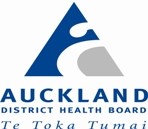
If printed, this document is only valid for the day of printing.
11. Documentation process for storing tissue for elective procedures
Step
Action
1.
Operating room RN must ensure that the Agreement to Treatment form CR0113 or
CR0111 and Body Parts / Tissue Release form CR2547 are completed.
2.
Document in PIMS:
Type of body part / tissue stored
Location of storage
If tissue not re-implanted whether it is for disposal or return
3.
If patient consents for return of the body part place the
yellow rectangular storage sticker
on the patient’s clinical record.
Yellow circular “Tissue in storage” sticker on patient’s front sheet.
4.
Package tissue as per surgeon’s preference with patient identification labels on the
packaging.
5.
Operating room RN stores body part / tissue in appropriate fridge / freezer and:
Completes log book documentation
From the triplicate Body Parts / Tissue release form
One sheet to accompany the body parts / tissue to the freezer and placed in body
parts folder
One sheet to be placed in patient’s clinical record
One sheet to be handed to patient / family / whānau
6.
The ward / Intensive care nurse is responsible for informing patient / family / whānau on
discharge or death that the tissue is in storage and facilitating return from the operating
room.
Back to Contents
Body-Parts-and-Tissue-Storage-Cremation-and-Return_2017-02-03.docx
Page 9 of 17

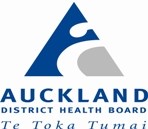
If printed, this document is only valid for the day of printing.
12. Documentation process for storing tissue in procedures when consent is not
gained (acutes)
Step
Action
1.
When the patient has not signed a consent form it must be assumed that the tissue is to
be returned until otherwise advised by the patient / whānau / family.
2.
Document in PIMS:
Agreement to treatment (CR 0111) is not signed, or Authority to treat without
consent form (CR 0114) has been signed
Type of body part / tissue
Location of storage
3.
Place into patient’s clinical record:
Body part / tissue rectangular sticker in patient’s clinical record (CC5247)
Body part / tissue round yellow sticker (CC5246) onto front sheet
Agreement to treatment form CR0111
Authority to treat without consent form (CR 0114)
Body part / tissue release form (CR2547)
Yellow rectangular storage sticker on the clinical record
Yellow circular tissue in storage sticker on patient’s front sheet
4.
Operating room RN stores body part / tissue in an appropriate fridge / freezer:
Completes log book documentation
From the triplicate Body Parts / Tissue release form
One sheet to accompany the body parts / tissue to the freezer and placed in body
parts folder
One sheet to be placed in patient’s clinical record
One sheet to be handed to patient / family / whānau
5.
The ward / Intensive care clinician is responsible for ensuring that the body Parts / Tissue
Release form is completed and for contacting Level 8 Neurosurgery Charge Nurse and or
Level 8 Vascular Charge Nurse.
6.
This form is collected / returned to the operating room for storage.
7.
The ward / Intensive care clinician is responsible for informing patient / family / whānau
on discharge or death that the tissue is in storage and facilitating its return from the
operating room.
Back to Contents
Body-Parts-and-Tissue-Storage-Cremation-and-Return_2017-02-03.docx
Page 10 of 17

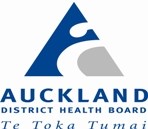
If printed, this document is only valid for the day of printing.
13. Skull bone flap management and storage
Step Action
1.
Get the NZ Blood Service Kit from Neuro unsterile stock room. Check the Expiry date
and integrity of tamper label
Follow the instructions on the reverse of Theatre checklist (180F03504) in the kit (Use
the ice pack stored in Tisseel freezer).
2.
Circulating nurse to complete the Request for Bone Flap storage Form (180F03604) and
if applicable place with Body part / tissue release form (CR2547)
3.
Place sterile specimen bags in unsterile plastic bag with extra patient labels. Place one
ice pack directly on top of the sealed bone flap container. Tuck the bubble wrap bag
with the specimens beside the bone flap container. Put the plastic bag with documents
on the top (Ice will coagulate the blood so keep it as far away as possible).
4.
Seal the chilly bin with sleek.
5.
Contact the Team leader or Scientist in Blood bank (3072834 or extn: 24013 / 24015)
6.
Send the chilly bin to Level 2 Blood Bank with an HCA
7.
Document in PiMs and Bone flap log book (outside Neuro CN office)
8.
Place large yellow bone flap sticker in the patient’s clinical notes and small yellow
sticker on the front sheet
9.
Confirm plan for skull flap and patient ID with the surgeon during the Sign out
CONTACT NZBS TISSUE BANK ON 027 567 5291 FOR ANY QUERIES 24/7
14. Liver vascular vessel management and storage
Step
Action
1.
If not already in a sterile pot, scrub nurse to place vessels into 500 mL plastic sterile pot and
fill to ¾ full with preservation solution Belzer solution.
2.
Circulating Nurse to label pot with recipient label / donor / zoo number / date / time /
surgeon / specimen type / blood group / expiry date (14 days).
3.
Place in 2 x sterile bags, with appropriate documentation. Place in Level 8 tissue fridge and
log into tissue book.
4.
Fill in vessel storage book with patient sticker, date, time.
5.
When vessels are removed from fridge the tissue book is completed to record if used or
disposed.
6.
After 14 days the tissue is either sent to LabPlus Specimen Reception Level 3 LabPlus
building Grafton for return (if requested) or for cremation with the Body parts / Tissue
Release form.
Back to Contents
Body-Parts-and-Tissue-Storage-Cremation-and-Return_2017-02-03.docx
Page 11 of 17

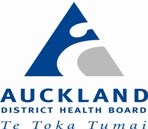
If printed, this document is only valid for the day of printing.
15. Skin management and storage
Step
Action
1.
Scrub nurse to prepare skin as per surgeon’s preference e.g. wrap in saline soaked non-
raytex gauze swab.
2.
Place in small dry sterile pot.
3.
Circulating nurse to label pot with patient label / date / time / surgeon / specimen type /
expiry date (28 days).
4.
Place into biohazard bag with body part / tissue release form or disposal of tissue form.
5.
Place in Level 8 OR tissue / bone fridge
Fill in tissue book.
6.
After 28 days the skin will be disposed of or sent to LabPlus Specimen Reception Level 3
LabPlus building Grafton to be returned to the patient with the Body parts / Tissue Release
form if requested.
16. Return or disposal of tissue or skull flap stored in Blood Bank or Operating
Rooms no longer required for replantation
Step Action
1. Lead surgeon communicates that the tissue or bone is no longer required
2. For Returns from the OR (skin / vessel / bone):
Patient completes Body tissues return / disposal forms for tissue.
OR staff sends Body Parts / Tissue release form with accompanying specimen to the
LabPlus Specimen Reception (level 3) LabPlus building Grafton to be returned to patient.
Put stamp “RTP” on register and tissue form
3. For Returns from Blood Bank (skull flap):
Neuro CN sends the appropriate yellow form to the NZ Blood Service on request
The patient will contact the blood bank and collect the tissue from there
4. If the patient is deceased, the OR is contacted by the ward nurse responsible for the
patient’s care and tissue is sent to the appropriate ward or to Forensic Pathology to
accompany the deceased to the funeral director.
5. For Disposal:
Send to LabPlus Specimen Reception (level 3) LabPlus building Grafton for disposal via
the normal LabPlus process. Add stamp “TDIS” to register and tissue form.
6. Complete appropriate log book and database as appropriate.
Back to Contents
Body-Parts-and-Tissue-Storage-Cremation-and-Return_2017-02-03.docx
Page 12 of 17

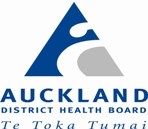
If printed, this document is only valid for the day of printing.
17. Return of donated organs
Organs and tissue that have been donated yet unable to be used are to be returned to the deceased donor
in a timely manner.
Step Action
1.
Where a donated organ or part thereof, is unable to be transplanted the Donor Coordinator
must be contacted.
2.
The Donor Coordinator will advise whether the organ or part thereof, is to be returned to
the donor family / whānau or is to be respectfully cremated as for per LabPlus disposal of
body parts / tissue procedure.
3.
If the organ, or part thereof, is to be returned to the deceased, the Donor Coordinator will
make all arrangements for the organ or tissue to be returned. The organ or tissue to be
returned is packed in a bowel bag, and put in an ice filled polystyrene chilly bin (as per
kidneys) and sealed with sleek. Complete the body part / tissue release form (CR2547) with
the donor details which will be provided by the Donor Coordinator. Enclose form in a
specimen bag and place form inside chilly bin. Seal and label chilly bin as per Donor
Coordinator’s instructions. If the Donor Coordinator does not have the address for the
organ / tissue to be returned to yet, place a piece of sleek across the top of the chilly bin,
write the donor’s number, (NHI number and date of birth – will need to get this from the
Donor Coordinator). The chilly bin is then placed in blood or specimen fridge.
4.
Make sure this information is passed onto the floor coordinator / team leader. When the
courier company picks up the chilly bin, remove the sleek with the patient information and
replace with the address the courier is to deliver the chilly-bin.
5.
Any organs, or part thereof, not being transplanted or returned to the deceased, are sent to
LabPlus Specimen Reception (level 3) LabPlus building Grafton for disposal via the normal
LabPlus process. The donor NHI / ZOO number only must be used on the disposal form as
identification.
Back to Contents
Body-Parts-and-Tissue-Storage-Cremation-and-Return_2017-02-03.docx
Page 13 of 17


If printed, this document is only valid for the day of printing.
18. Procedure
Before any procedure there is discussion with the patient regarding
body parts/tissue – patient /family/whanau wishes are indicated on
the Agreement to Treatment form. Appropriate documentation is
completed
National Women’s Health
Body part or tissue removed
only:
“Under 20 weeks” fetuses
Tissue for immediate
Return with patient after
return following
YES
procedure
procedure?
NO
Stored appropriately in OR
Tissue to be placed back
YES
(for soft tissues) or sent to
into patient?
blood bank (bone)
NO
Send to LabPlus for testing
Send to LabPlus Forensic
and/or return or
Pathology for post
cremation
mortem and return or
cremation
Back to Contents
Body-Parts-and-Tissue-Storage-Cremation-and-Return_2017-02-03.docx
Page 14 of 17



If printed, this document is only valid for the day of printing.
19. Nurse responsible for patient care / Duty manager (all clinical areas)
Patient passes away
Yellow sticker
or Body Parts/ Tissue form in clinical
record ticked
for return
YES
NO
Body Parts / Tissue form (CR2547)
located in clinical record and body part
No additional action required
collected from either Blood Bank
(bone), laboratory or Level 8 operating
room freezer (vessels/skin)
Normal Hours Mon to Fri: Ward staff member to
contact Tissue Co-ordinator at Lab Plus (tissue) for
retrieval of body part
Duty Manager confirms
Out of Hours: Duty Manager to contact Emergency
collection of body part with staff
NO
after hours on call Histology Scientist/Technician
member
Skull flap or bone: Blood Bank phone 027 567 5291
at any time
YES
Ward staff member to put yellow
sticker on the Blue Death notice
form and send with body part to
Forensic Pathology (FP) or have
body part delivered to FP
Back to Contents
Body-Parts-and-Tissue-Storage-Cremation-and-Return_2017-02-03.docx
Page 15 of 17

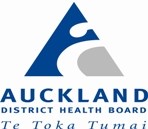

If printed, this document is only valid for the day of printing.
20. Body parts yellow sticker
21. Legislation
Human Tissue Act 2008
Code of Health and Disability Services Consumers’ Rights Regulation 1996
Hauora o te Tinana me ona tikanga (Guideline)
22. Associated Auckland DHB documents
Bicultural Policy
Code of Rights
Deceased (Tupapaku) +/- Referrals to the Coroner
Heart Registry
Informed Consent
Liver Tissue Collection
Specimen Management
Tikanga Best Practice
Waste Management
Leaflets
Information for handling of returned Body Parts and Tissue (CC5073)
Information regarding the Examination, Return and Cremation of Body Parts and Tissue (CC5074)
Clinical forms
Agreement to Treatment (CR0111)
Authorisation to retain Heart and Lungs (CR2017)
Authorisation to retain Liver part (CR8706)
Authority to treat without consent (CR0114)
Body parts / Tissue Release form (CR2547)
National Women’s Only
: Pink form – Placenta Release form (stillbirths / neonatal deaths CR2024)
Post mortem Consent non Coroners (CR0025)
23. Disclaimer
No guideline can cover all variations required for specific circumstances. It is the responsibility of the health
care practitioners using this Auckland DHB guideline to adapt it for safe use within their own institution,
recognise the need for specialist help, and call for it without delay, when an individual patient falls outside
of the boundaries of this guideline.
Back to Contents
Body-Parts-and-Tissue-Storage-Cremation-and-Return_2017-02-03.docx
Page 16 of 17

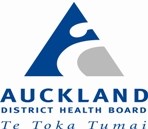
If printed, this document is only valid for the day of printing.
24. Corrections and amendments
The next scheduled review of this document is as per the document classification table (page 1). However,
if the reader notices any errors or believes that the document should be reviewed
before the scheduled
date, they should contact the owner or th
e Document Controller without delay.
Back to Contents
Body-Parts-and-Tissue-Storage-Cremation-and-Return_2017-02-03.docx
Page 17 of 17



































